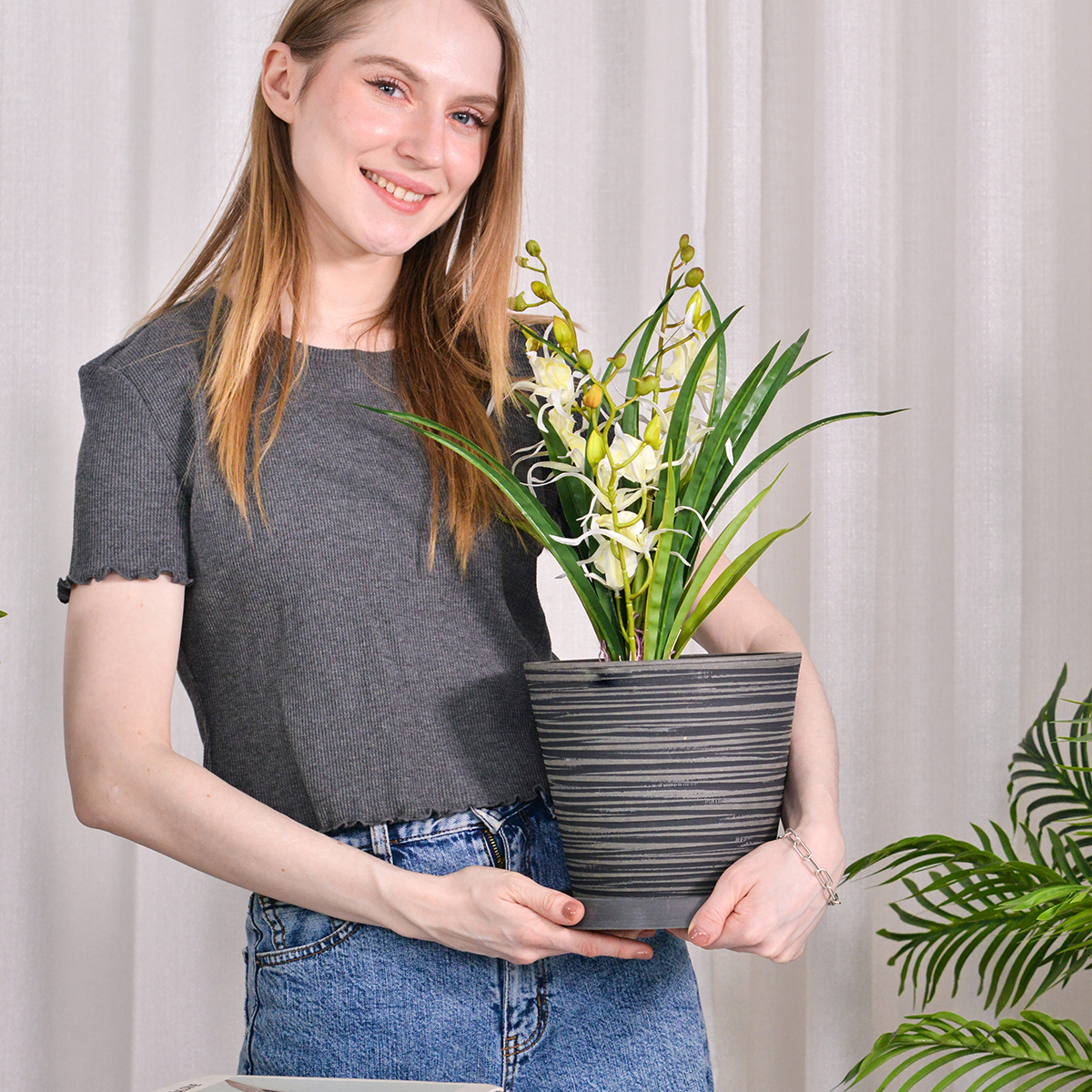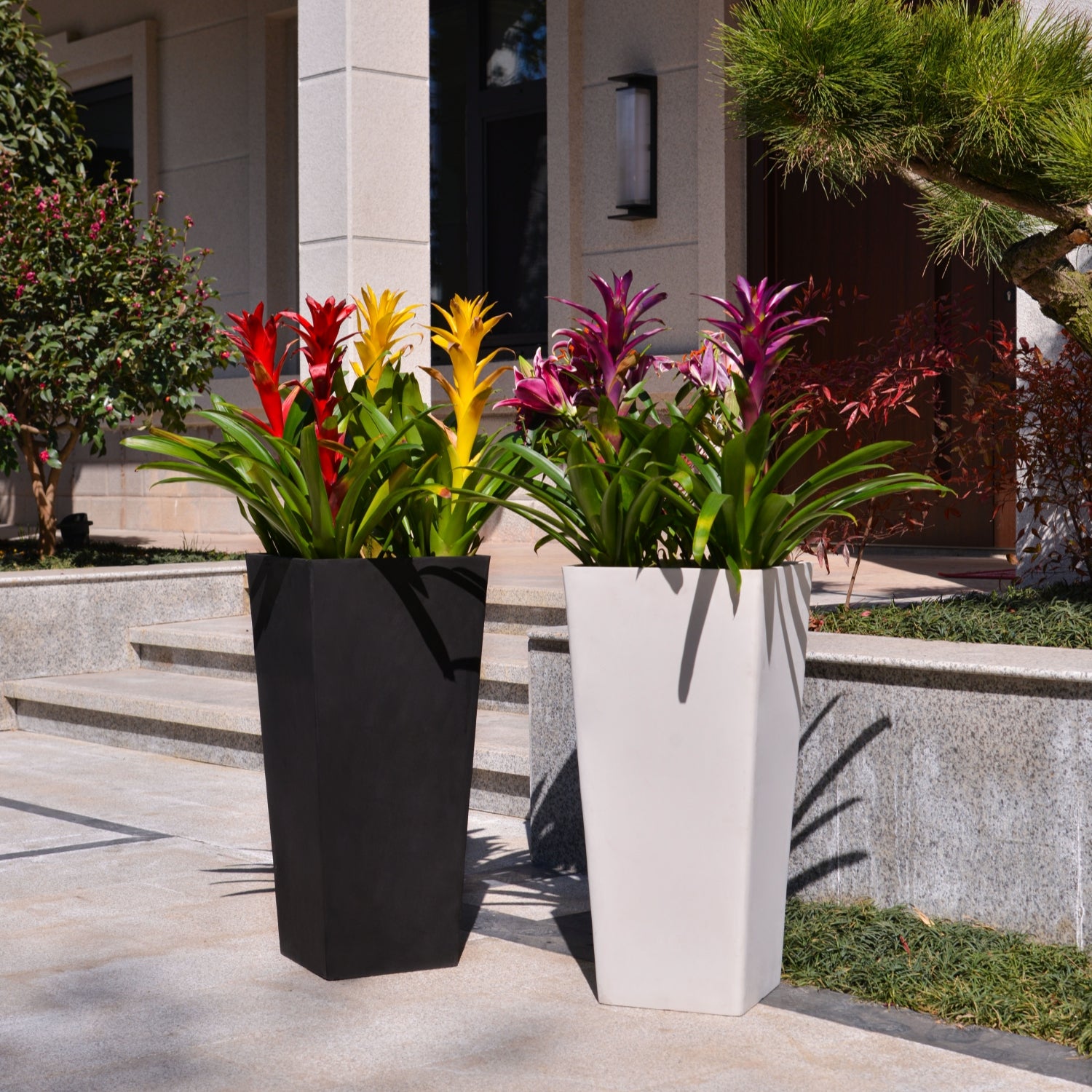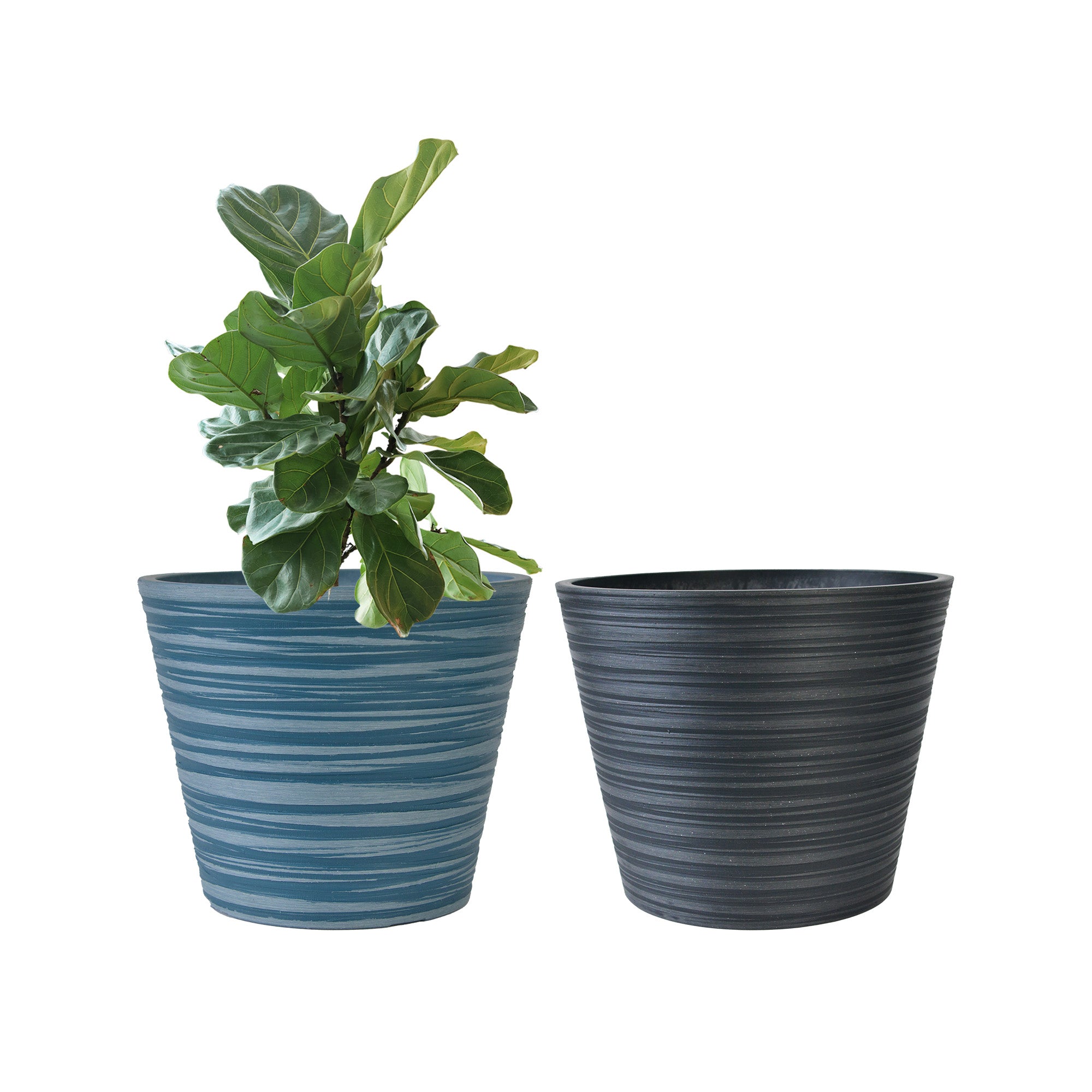Peony Flowers: The Ultimate Guide to Growing and Caring for Indoors (Pots, Tips & More)
Do you dream of bringing the exquisite beauty and fragrance of Peony flowers indoors? While traditionally beloved in outdoor gardens, Peonies can be cultivated indoors with the right techniques and care. These magnificent flowering plants, belonging to the genus Paeonia and prized for their large, showy blooms and rich history, can add a touch of elegance and luxury to your home. This comprehensive guide will explore the possibilities of growing Peonies indoors, covering everything from planting to pot selection and essential care tips.
Can Peonies Be Grown Indoors?
Yes, Peonies can be grown indoors, although it’s important to understand that they are naturally outdoor plants and require specific conditions to thrive and bloom indoors. Indoor peony cultivation is more challenging than growing them outdoors and may not always guarantee abundant blooms. However, with careful attention to their needs, you can enjoy the beauty of Peony foliage and potentially some flowers indoors.
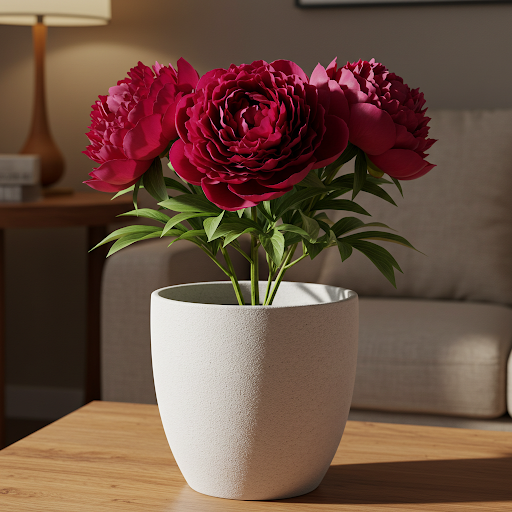
Peony flowers
Ideal Indoor Growing Conditions (with Considerations for Indoor Culture):
- Light: Peonies need at least 6-8 hours of direct sunlight per day to bloom properly. This is often the biggest challenge for indoor growing. South-facing windows are best, but even then, supplemental grow lights may be necessary, especially during winter months or in less sunny locations. Insufficient light is the primary reason why indoor peonies may fail to bloom.
- Soil: Peonies require well-draining, fertile soil. Use a high-quality potting mix amended with compost and perlite to ensure good drainage and nutrient availability. Avoid heavy clay soils that retain too much moisture.
- Watering: Peonies need consistent moisture, especially during their growing and blooming season. Water deeply when the top inch of soil feels dry to the touch. Ensure good drainage to prevent root rot. Reduce watering slightly after blooming and during dormancy. Indoor peonies may dry out faster than outdoor ones due to indoor heating and air circulation, so monitor soil moisture regularly.
- Temperature: Peonies need a period of cold dormancy to bloom properly. This is another significant challenge for indoor growing. They require a period of cool temperatures (around 40°F or 4°C) for several weeks in the winter to initiate flower bud development. This cold period is difficult to replicate indoors in most homes. You may need to move potted peonies to an unheated garage, basement, or cold room for the winter dormancy period. During the growing season, average room temperatures between 60°F to 70°F (15°C to 21°C) are ideal. Avoid high temperatures, especially during dormancy.
- Humidity: Peonies prefer moderate humidity. Average indoor humidity is generally acceptable, but you can increase humidity slightly by placing pots on pebble trays filled with water or using a humidifier, especially during dry winter months. Good air circulation is also important to prevent fungal diseases.
Planting Peonies Indoors:
- Starting from Bare Roots or Potted Plants: Peonies are typically started from bare roots or purchased as potted plants. Bare roots are usually planted in the fall or early spring, while potted plants can be planted at any time, although spring or fall is still preferable.
- Planting Time: For indoor planting, fall or early spring is still the best time to plant bare roots or repot potted peonies, aligning with their natural growth cycle.
Choosing the Right Pots for Indoor Peonies:
- Suitable Pot Types: Choose large, sturdy pots that can accommodate the peony’s root system and support the plant as it grows. Terracotta or ceramic pots are good choices, as they provide good drainage and stability. Avoid lightweight plastic pots that may easily tip over as the plant grows larger.
- Drainage: Excellent drainage is absolutely essential for peonies to prevent root rot. Ensure your chosen pot has large drainage holes at the bottom.
- Pot Size: Peonies need ample space for their roots to develop. Select a pot that is at least 12-18 inches in diameter and depth for a single peony plant. Larger pots are generally better, as they provide more room for root growth and help retain moisture. If planting multiple peonies in one container (not generally recommended for indoor growing), ensure even more space.
- Potting Mix: Use a well-draining, fertile potting mix as mentioned earlier. A mix specifically formulated for flowers or roses can also be suitable.
Essential Care Tips for Indoor Peonies (Focusing on Indoor Challenges):
- Light Management: Provide maximum possible sunlight. Use south-facing windows and supplement with strong grow lights if necessary, especially during shorter winter days. Monitor light levels carefully and adjust as needed.
- Watering Schedule: Maintain consistent soil moisture during the growing season, but avoid overwatering. Check soil moisture frequently and adjust watering based on indoor conditions and pot type.
- Dormancy and Cold Period: Crucially, provide a cold dormancy period. In late fall or early winter, after foliage has died back, move potted peonies to a cold, dark location like an unheated garage, basement, or cold room where temperatures stay consistently around 40°F (4°C) for at least 8-12 weeks. Water very sparingly during dormancy, just enough to prevent the soil from completely drying out. After the cold period, gradually bring them back to a warmer, brighter location to break dormancy and encourage new growth.
- Fertilizing: Fertilize peonies in pots sparingly. Over-fertilizing can lead to lush foliage but fewer flowers. Apply a balanced, slow-release fertilizer in early spring as new growth emerges. You can also use a liquid fertilizer diluted to half strength a couple of times during the growing season. Avoid fertilizing during dormancy.
- Pruning: Prune to remove spent flowers and any yellow or brown leaves. Cut back foliage to near soil level in the fall after it has naturally died back before the dormancy period.
- Support: Tall peony varieties may require staking or support, even indoors, especially when blooms appear.
- Repotting: Peonies do not like to be disturbed once established. Repot only when absolutely necessary, typically every 3-4 years, or when the plant becomes severely root-bound. Repot in the fall or early spring, during dormancy or just as new growth begins.
- Pest and Disease Control: Monitor for common pests like aphids, spider mites, and fungal diseases. Good air circulation and proper watering can help prevent many issues. Treat any infestations or diseases promptly with appropriate organic or chemical controls if needed.
Popular Peony Varieties Suitable for Pots (Considerations for Indoor Growing):
- Intersectional Peonies (Itoh Peonies): Often recommended for containers due to their stronger stems and longer bloom season. Varieties like ‘Bartzella’, ‘Garden Treasure’, or ‘Julia Rose’ might be more suitable for pots.
- Herbaceous Peonies (Bush Peonies): Choose compact varieties. ‘Bowl of Beauty’, ‘Festiva Maxima’ (classic fragrance), or ‘Sarah Bernhardt’ (classic pink) in smaller cultivars might be attempted, but may still become quite large for indoor spaces.
- Single or Japanese Type Peonies: May be slightly less demanding in terms of bloom quantity and might be more adaptable to slightly less ideal indoor conditions.
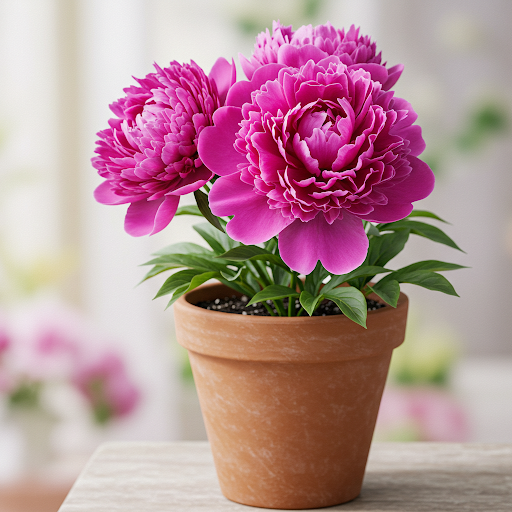
Peony flowers
In Summary:
Growing Peonies indoors is a challenging but potentially rewarding endeavor for dedicated plant enthusiasts. While replicating their natural outdoor environment indoors requires careful attention to light, temperature, watering, and dormancy, it is achievable with the right knowledge and effort. By providing ample sunlight (potentially supplemented by grow lights), well-draining soil, consistent moisture during the growing season, a crucial cold dormancy period, and appropriate pots, you may be able to enjoy the magnificent blooms and elegant foliage of Peonies within your home. However, be prepared for the possibility that indoor peonies may not bloom as profusely as their outdoor counterparts.
For more detailed botanical information and to explore the wide variety of Peony types, you can visit the Wikipedia page on Paeonia.
Important Note: Peonies are considered mildly toxic if ingested. Keep them out of reach of children and pets who may be tempted to chew on the flowers or leaves. Also, be aware that Peonies, especially when blooming, can be quite heavy and require stable pot placement, particularly if grown indoors.
K2-11T
By greenship|2024-08-13T04:21:25+00:00August 13, 2024|Categories: Hand-carving Series|
HS
By greenship|2024-08-13T06:45:17+00:00August 13, 2024|Categories: Hand-carving Series|
Modern Plant Pots丨Planter for Indoor Plants,8 inch or 10 inch Plant Pots with Drainage Hole,Decorative Flower Pots
By greenship-seo|2025-04-10T08:32:55+00:00January 7, 2025|Categories: Hand-carving Series|Tags: Decorative Flower Pots, Self-Watering Pots|
11TH
By greenship|2024-08-13T02:50:25+00:00August 13, 2024|Categories: Hand-carving Series|
GreenShip 27inch Tall Planters for Porch, Large Outdoor Planter Pots with Drainage Hole
By greenship-seo|2025-04-10T06:27:21+00:00April 7, 2025|Categories: Hand-carving Series|Tags: Decorative Flower Pots|
Planter 5 in W / 8 in W / 12 in W or Indoor Outdoor Plants, Modern Decorative Plant Pots with Drainage Hole, Decorative Flower Pots
By greenship-seo|2025-04-10T06:37:58+00:00January 16, 2025|Categories: Hand-carving Series|Tags: Decorative Flower Pots|

